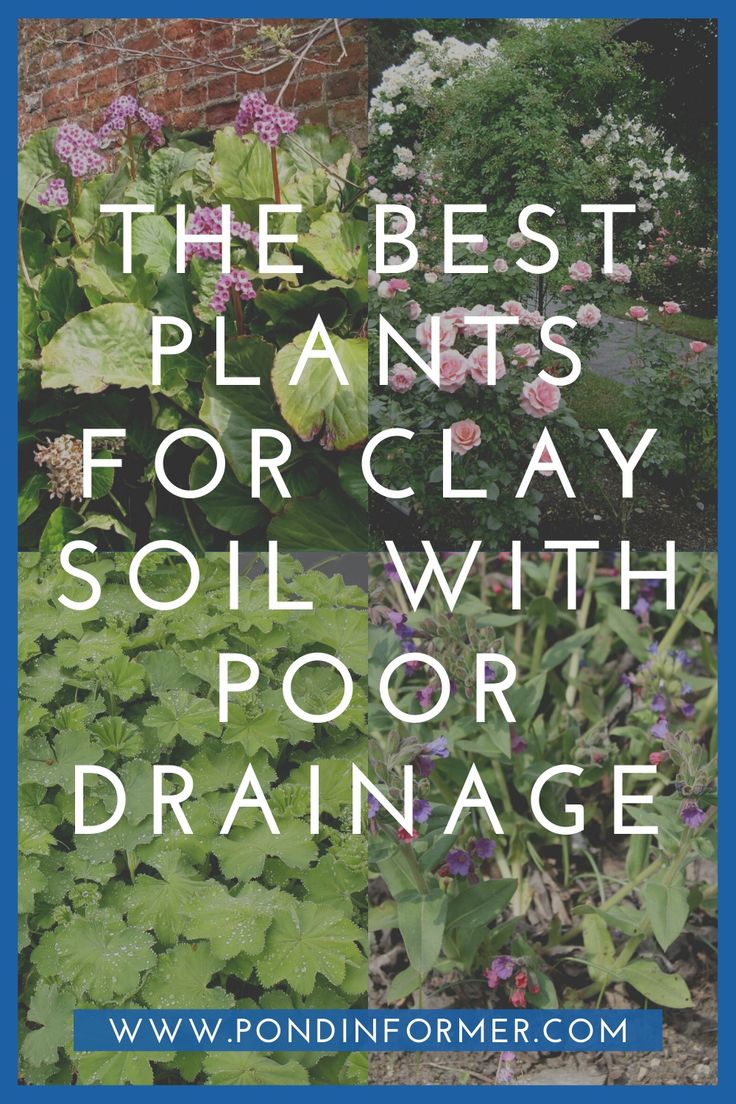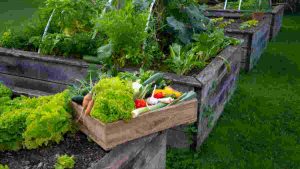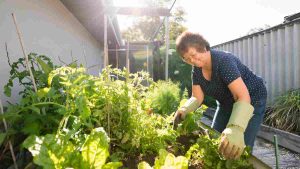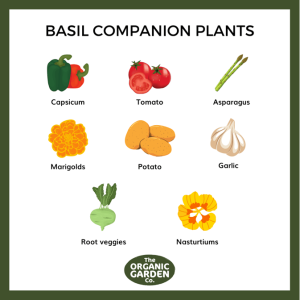Plants that thrive in clay soil with poor drainage include Daylilies, Hostas, and Iris. These plants are well-suited for challenging conditions.
Clay soil can be tough for gardening due to its density and poor drainage capabilities. Fortunately, certain plants excel in these conditions, making them ideal choices for your garden.
Daylilies, Hostas, and Iris not only tolerate clay soil but also add vibrant colors and textures to your landscape.
Their robust root systems help them survive and even thrive where other plants might struggle. Opting for these resilient plants ensures a beautiful and low-maintenance garden,
even in less-than-ideal soil conditions. Selecting the right plants is key to achieving a lush, thriving garden in clay soil.
:max_bytes(150000):strip_icc()/plants-that-grow-in-clay-soil-4165330-02-1f1e65b00cb449a3a0d1b976c68376e7.jpg)
Credit: www.thespruce.com
Top Plants For Clay Soil
Clay soil can be challenging for gardeners. It holds water, which can lead to poor drainage. The good news is that some plants thrive in clay soil. Below, we’ll explore the top plants for clay soil, including perennials and annuals.
Perennials
Perennials come back year after year. Here are some that do well in clay soil:
| Plant Name | Light Requirements | Key Features |
|---|---|---|
| Black-Eyed Susan | Full Sun | Bright yellow flowers |
| Daylily | Full Sun to Part Shade | Low maintenance |
| Hosta | Part Shade to Full Shade | Attractive foliage |
| Bee Balm | Full Sun to Part Shade | Attracts pollinators |
Annuals
Annuals complete their life cycle in one season. They add color and variety to your garden. Here are some annuals that thrive in clay soil:
- Zinnia: Needs full sun, bright and cheerful blooms.
- Marigold: Prefers full sun, easy to grow.
- Cosmos: Requires full sun, delicate flowers.
- Sunflower: Loves full sun, tall and striking.
Consider these plants for your clay soil garden. They will add beauty and resilience to your landscape.
Benefits Of Clay Soil
Clay soil offers great benefits for plants with poor drainage. Its dense structure retains nutrients and moisture, supporting plant growth.
Clay soil often gets a bad reputation. But it has many benefits. It is nutrient-rich and retains water well. These qualities make it ideal for certain plants. Let’s explore the benefits of clay soil.
Nutrient-rich
Clay soil holds onto nutrients very well. Nutrients like potassium, calcium, and magnesium stay in the soil. This helps plants grow strong and healthy. Many plants thrive in nutrient-rich clay soil.
| Benefit | Description |
|---|---|
| High Nutrient Retention | Keeps essential minerals for plants |
| Improved Plant Growth | Provides a rich environment for roots |
Water Retention
Clay soil holds water better than sandy soil. This means plants get a steady supply of water. Even during dry spells, plants can still thrive.
- Reduces the need for frequent watering
- Helps plants survive in dry conditions
Even with poor drainage, clay soil has its perks. It keeps plants well-nourished and hydrated. With the right plants, your garden can flourish in clay soil.
“`
Challenges Of Poor Drainage
Gardening in clay soil with poor drainage presents unique challenges. This soil type often leads to waterlogged conditions, which can harm plant health. Understanding these challenges helps you choose the right plants and care techniques.
Root Rot
Root rot is a common issue in poorly drained soil. Excess water can suffocate plant roots. This condition creates an environment for harmful fungi. These fungi attack the roots, causing them to decay.
Decayed roots cannot take in nutrients effectively. Plants with root rot often show stunted growth. Leaves may turn yellow and fall off. In severe cases, plants may die.
Aeration Issues
Clay soil has tiny, densely packed particles. This structure limits air circulation. Poor aeration affects root health. Roots need oxygen for respiration. Without enough oxygen, roots cannot function properly.
Stunted growth and poor plant health result. To improve aeration, consider amending the soil. Adding organic matter like compost can help. Perlite or sand can also improve soil structure.
| Problem | Cause | Solution |
|---|---|---|
| Root Rot | Excess water suffocates roots | Improve drainage, use raised beds |
| Poor Aeration | Densely packed soil particles | Add organic matter, use soil amendments |
Addressing these challenges involves a mix of soil management and plant selection. Choose plants that tolerate wet conditions. Use raised beds to improve drainage. Regularly amend soil with organic matter. These steps help create a healthier garden environment.

Credit: www.pinterest.com
Perennials That Thrive
Gardening in clay soil can be challenging. Clay soil retains water and drains poorly. Choosing the right plants makes a big difference. Some perennials thrive in clay soil with poor drainage. Let’s explore some of these resilient plants.
Daylilies
Daylilies are versatile and tough. They thrive in clay soil. Their vibrant flowers bring color to any garden.
- Easy to grow
- Low maintenance
- Resistant to pests and diseases
Daylilies come in various colors. They bloom from early summer to fall. They adapt well to different conditions. Plant daylilies in full sun for best results. They tolerate partial shade too.
Hostas
Hostas are perfect for shady spots. They thrive in clay soil with poor drainage. Their lush foliage adds texture to gardens.
- Shade-loving
- Wide range of sizes
- Variegated leaves
Hostas are known for their beautiful leaves. They come in various shades of green, blue, and yellow. Hostas also produce lovely flowers. They need minimal care and are long-lasting perennials. Water them regularly to keep their leaves healthy.
Both daylilies and hostas are excellent choices. They thrive in challenging clay soil conditions. Add them to your garden for beauty and resilience.
Annuals For Clay Soil
Clay soil can be challenging for many plants. But some annuals thrive in it. These hardy plants bring color and life to your garden. Let’s explore two popular choices: Zinnias and Marigolds.
Zinnias
Zinnias are bright and cheerful flowers. They grow well in clay soil. These flowers come in many colors: red, pink, yellow, and white. Zinnias are easy to care for. They need full sun and regular watering.
Here are some benefits of planting Zinnias:
- Low maintenance: Zinnias require minimal care.
- Attract pollinators: Bees and butterflies love them.
- Long blooming season: They bloom from spring to fall.
Marigolds
Marigolds are another excellent choice for clay soil. They are known for their vibrant orange and yellow flowers. Marigolds are also easy to grow.
Here are some benefits of planting Marigolds:
- Pest deterrent: They repel many garden pests.
- Soil health: Marigolds improve soil health.
- Continuous bloom: They bloom continuously through the season.
| Annual | Colors | Benefits |
|---|---|---|
| Zinnias | Red, Pink, Yellow, White | Low maintenance, Attract pollinators, Long blooming season |
| Marigolds | Orange, Yellow | Pest deterrent, Soil health, Continuous bloom |
Planting Zinnias and Marigolds in clay soil can transform your garden. These flowers offer beauty and practical benefits. Try these annuals for a vibrant and healthy garden.
Shrubs For Clay Soil
Clay soil with poor drainage can pose challenges for many plants. However, certain shrubs thrive in these conditions. These shrubs not only enhance your garden’s beauty but also improve soil health. Let’s explore some excellent choices.
Hydrangeas
Hydrangeas are a fantastic choice for clay soil. They love the moisture-rich environment and offer stunning blooms. Planting hydrangeas in clay soil helps them retain the moisture they need.
- Variety: Bigleaf, Oakleaf
- Bloom Time: Summer to Fall
- Sunlight: Partial shade to full sun
Bigleaf hydrangeas come in blue, pink, or purple hues, depending on soil pH. Oakleaf hydrangeas provide beautiful white flowers and striking foliage in autumn.
Spireas
Spireas are another great option for clay soil. These hardy shrubs are easy to care for and provide a burst of color. They tolerate various soil conditions, including clay soil.
- Variety: Japanese, Bridal Wreath
- Bloom Time: Spring to Summer
- Sunlight: Full sun to partial shade
Japanese spireas have vibrant pink blooms that attract pollinators. Bridal Wreath spireas offer cascading white flowers, creating a stunning visual effect in your garden.
| Plant | Variety | Bloom Time | Sunlight |
|---|---|---|---|
| Hydrangeas | Bigleaf, Oakleaf | Summer to Fall | Partial shade to full sun |
| Spireas | Japanese, Bridal Wreath | Spring to Summer | Full sun to partial shade |
These shrubs not only survive but thrive in clay soil. They add beauty and resilience to your garden. Choose the right variety for your space and enjoy a lush, vibrant garden.
Trees Adapted To Clay
Growing trees in clay soil can be challenging. Clay soil has poor drainage and can be dense. But, some trees thrive in these conditions. Let’s explore some trees adapted to clay soil.
Maples
Maple trees are resilient and can grow well in clay soil. They offer beautiful fall colors and provide shade. Some common maple varieties include:
- Silver Maple – Grows quickly and tolerates wet soil.
- Red Maple – Known for its stunning red foliage in autumn.
- Sugar Maple – Famous for its sap, which is used to make maple syrup.
Maple trees prefer slightly acidic to neutral pH levels. They can withstand heavy clay soil if the roots are not waterlogged. Ensure the soil is well-drained to promote healthy growth.
Oaks
Oak trees are hardy and can adapt to various soil types, including clay. They are long-lived and provide excellent shade. Some popular oak varieties suitable for clay soil are:
- Pin Oak – Tolerates wet and compacted soil. It has a pyramidal shape.
- Bur Oak – Grows well in heavy clay and has a broad canopy.
- Swamp White Oak – Prefers moist conditions and can handle clay soil.
Oak trees are deep-rooted and can thrive in less-than-ideal soil conditions. They are also drought-tolerant once established. Planting oak trees can enhance the landscape and provide habitat for wildlife.
Improving Drainage
Clay soil with poor drainage can be challenging for plant growth. Improving drainage can make a significant difference. By enhancing the soil structure, you can help plants thrive. Below are some effective methods to improve drainage in clay soil.
Organic Matter
Adding organic matter is one of the best ways to improve soil drainage. Organic matter helps break up heavy clay particles. It increases the soil’s ability to retain nutrients and water.
Here are some types of organic matter you can use:
- Compost
- Manure
- Leaf mold
Work the organic matter into the top 6-12 inches of soil. This will help create a more porous structure. Repeat this process annually for the best results.
Raised Beds
Using raised beds can greatly improve drainage for plants. Raised beds allow you to control the soil composition. This method prevents water from pooling around plant roots.
Here are steps to create effective raised beds:
- Build frames using wood, stone, or brick.
- Fill the frames with a mix of topsoil and organic matter.
- Ensure the bed height is at least 12 inches.
Raised beds also warm up faster in spring. This gives your plants a head start on the growing season. They are especially helpful in areas with heavy rainfall.

Credit: southernlivingplants.com
Frequently Asked Questions
What Grows Well In Poorly Drained Clay Soil?
Plants that thrive in poorly drained clay soil include daylilies, asters, and switchgrass. Other suitable options are sedges, hostas, and irises. These plants are well-adapted to heavy, water-retentive soils and can flourish with minimal maintenance.
How Do You Fix Poor Draining Clay Soil?
Fix poor draining clay soil by adding organic matter like compost or aged manure. Use gypsum to improve soil structure. Aerate the soil with a garden fork. Plant cover crops to enhance soil health. Maintain proper watering practices.
What Plant Grows Best In Clay Soil?
Daylilies, asters, and black-eyed Susans grow best in clay soil. These plants thrive in dense, nutrient-rich conditions.
What Do You Mix With Clay Soil To Improve Drainage?
Mix sand, organic compost, and gypsum with clay soil. These materials improve drainage and soil structure effectively.
Conclusion
Choosing the right plants can transform clay soil with poor drainage. Opt for resilient species like daylilies, hostas, and astilbe. These plants thrive in challenging conditions, enhancing your garden’s beauty. With careful selection, your garden can flourish despite the soil challenges.
Happy gardening!






One Response